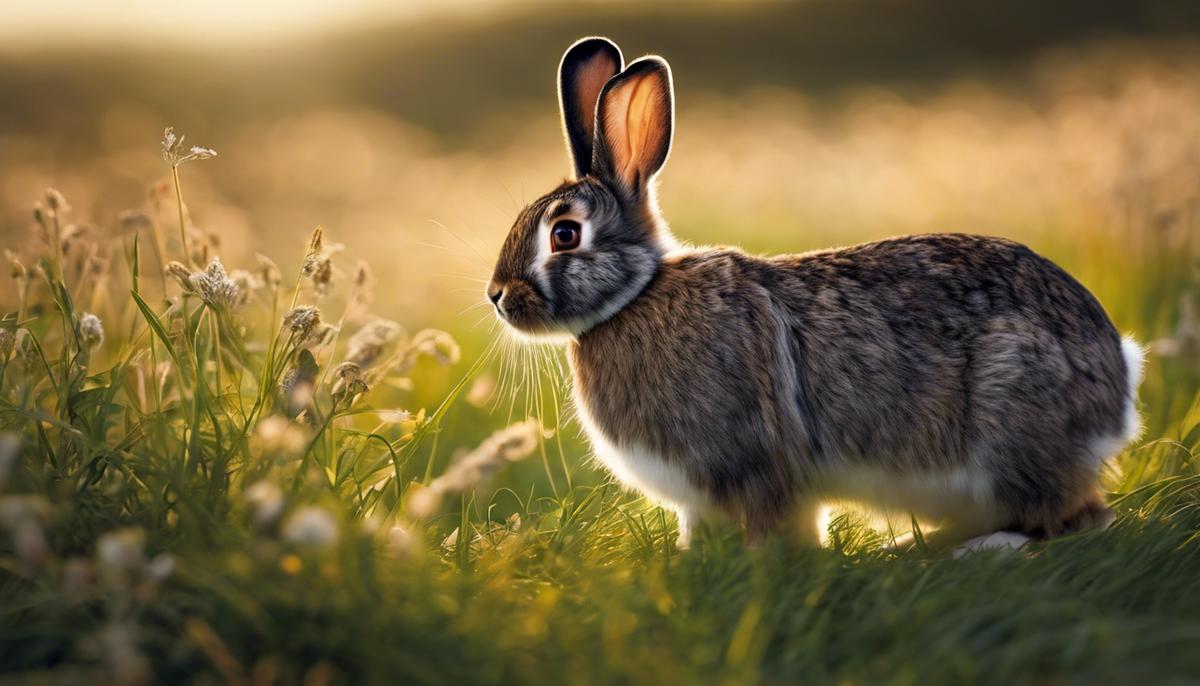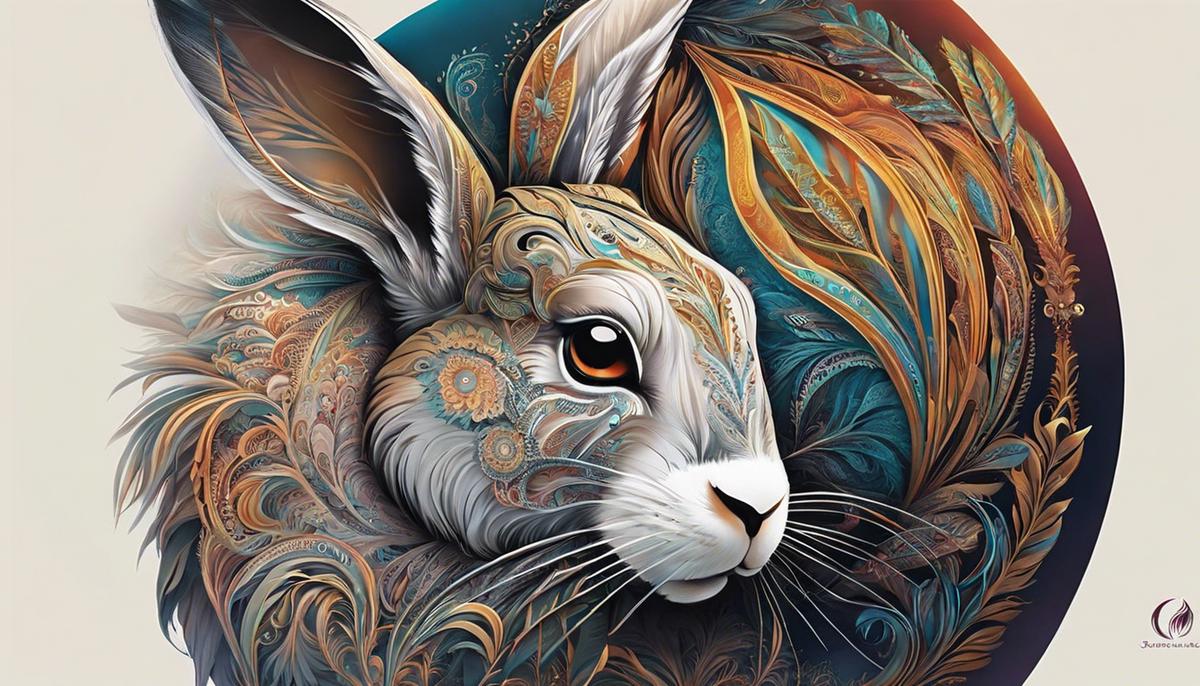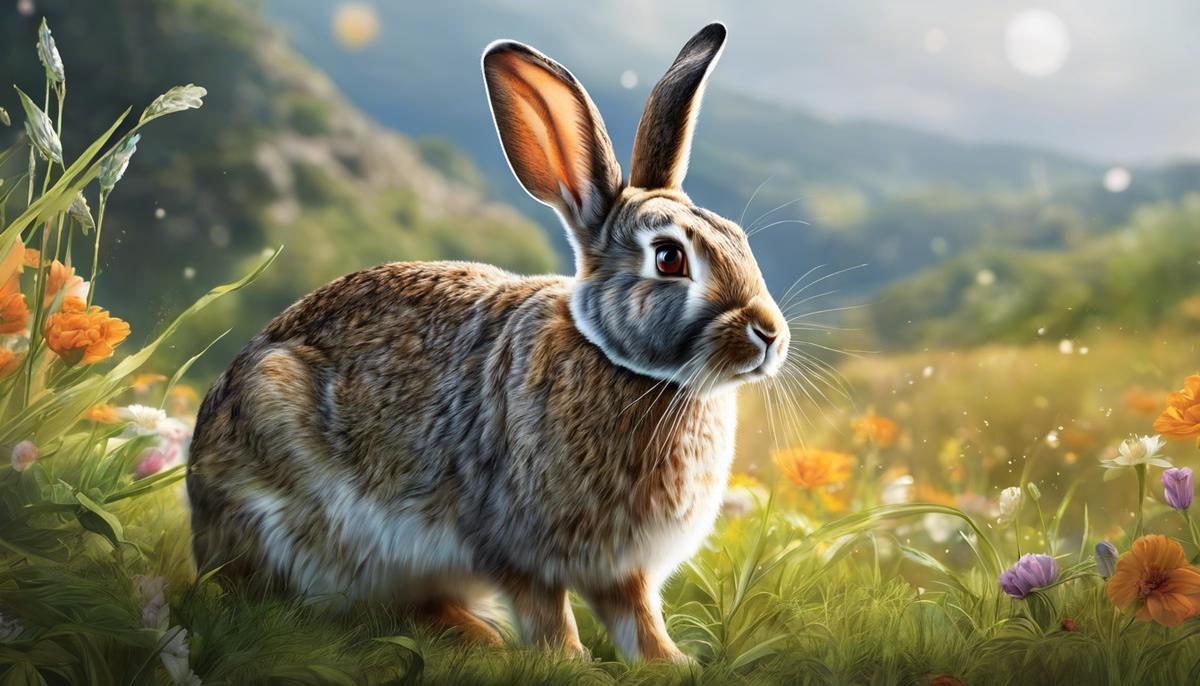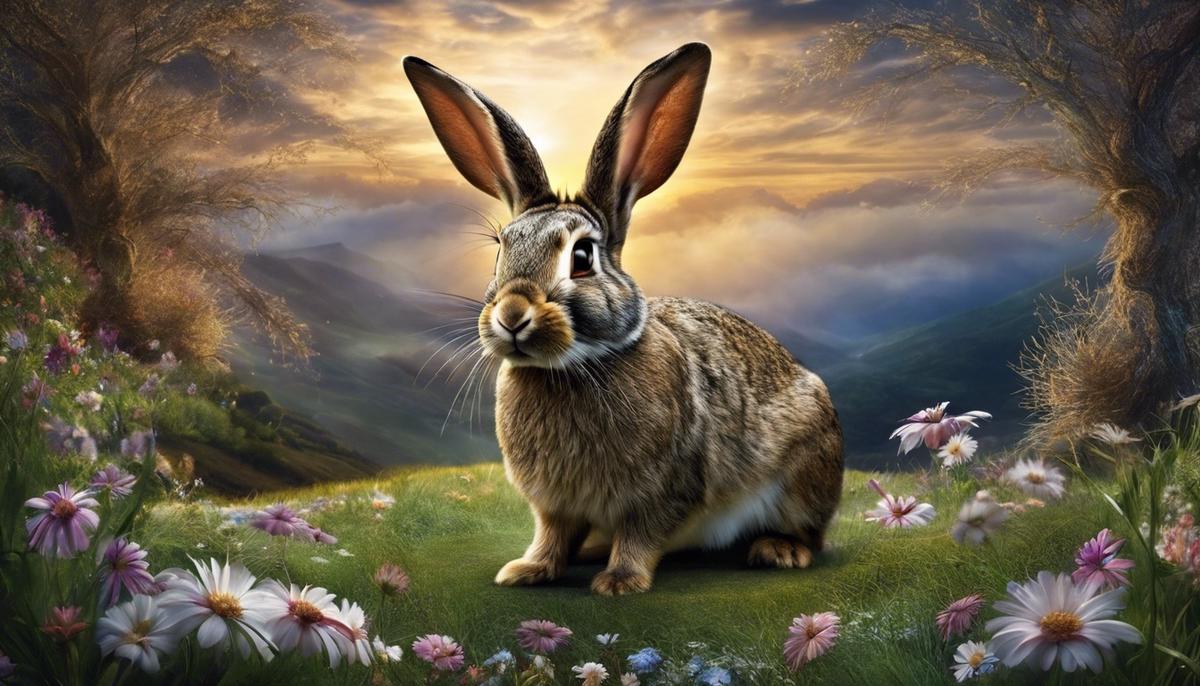The intriguingly complex interaction between the metaphysical world and our understanding of it through dreams is a phenomena well acknowledged in many traditions and religions around the world. One of such instances, interesting yet often overlooked, is the presence of rabbits, especially within the Christian tradition, and more specifically, in dreams. While rabbits may be laid aside as simply ordinary creatures, their delineation in the Biblical discourse suggests otherwise, denoting symbolic meanings that require careful interpretation. This exploration covers not only the rabbit’s portrayal in the Bible, but also the broader symbolism related to rabbits in dream interpretations, and sheds light on case studies within the Christian tradition, offering a richer comprehension of their spiritual potentials.
Rabbits in Biblical History
The Rabbit in Biblical Text: A Historical Examination
The seductive lure of unraveling historical mysteries often leads scholars to envelop themselves in ancient texts, eager to decode the intricate relationship between man and nature etched in them. One such compelling enigma is the depiction of rabbits in Biblical texts. The symbolic representation of this innocuous creature has threaded its way through Judeo-Christian tradition, offering compelling perspectives on how the nature of the rabbit has been understood within this religious framework.
In interpreting the context of rabbits in the Bible, it’s all-important to understand how translations from the original languages — Hebrew for the Old Testament and Greek for the New Testament — can sometimes modify our comprehension of specific animals referenced in the text. Rabbits are mentioned explicitly in only two passages of the Bible, both times in adhering to dietary law, and hence, the exploration of this theme necessitates a detailed understanding.
According to Leviticus 11:6 and Deuteronomy 14:7, it is stated that “the hare, because it chews the cud, but does not part the hoof, is unclean to you.” At first glance, this seems perplexing since, from a scientific standpoint, rabbits do not ‘chew the cud’ in the way certain ruminants like cows or goats do. This confusion can be sourced to the translation challenges faced by early scholars. The original Hebrew term ‘arnebeth’, which got translated as hare, doesn’t have a known etymology and has been a topic of contention among biblical scholars.
Some believe Leviticus refers to the peculiar habit that rabbits have of eating their feces directly from their body, a physiological necessity known as coprophagy, which enhances the digestion of plant materials, similar to the rumination process in other herbivores. Ancient authors like Herodotus and Pliny the Elder observed this behavior and mistakenly identified it as “chewing the cud“, a misinterpretation that found its way into biblical translations.
In Christian symbolism, rabbits often contain somewhat paradoxical interpretations. Its rapid reproduction became associated with fertility and abundance, often depicted in medieval religious art centered around Spring and Easter celebrations. Yet, because of the same prolific reproductive characteristics, it occasionally signified lust and sexual excess, making it a symbol of sin.
In an allegorical interpretation, theological scholar St. Augustine regarded the depiction of rabbits as representations of those whose lives are consumed by earthly desires. His writings expound on the concept of rabbits as emblems of those fixated on the temporal, transient pleasures of life – hence the admonishments in Leviticus and Deuteronomy against consuming them.
In summary, the depiction of rabbits in Biblical texts oscillates between the dichotomous symbolism of both virtue and vice and offers a remarkable glimpse into the complexity of Biblical symbology. Centuries worth of cultural, linguistic, and theological intricacies underpin this simple creature’s presence, and by exploring them, we gain fresh insight into the rich tapestry of beliefs that compile our historical and cultural roots. The rabbit, thus, presents itself not only as an interesting topic of biological study, but its depiction in Biblical texts establishes it as a fascinating vessel of historical interpretation as well.

Symbolic Meaning of Rabbits in Dreams
Building upon the rich tapestry of symbolism that the mention of rabbits in biblical texts provides, it is vital to delve further into the interpretative analysis of these seemingly innocuous creatures within both historical and contemporary dream analysis. Granting insight into our subconscious and revealing profound connections to ancient lore, rabbits emerge as a prevailing figure of symbolism.
Historically speaking, extensive dream literature spanning a multitude of cultures pays homage to the symbolic implications of rabbits. Noted Jungian psychoanalyst Carl Gustav Jung posed that dreams serve as a mirror to our unconscious mind, with every symbol therein holding significant meaning. Thus, the appearance of rabbits in dreams navigates us towards notions of vulnerability, spontaneity, and unpredictability, echoing life’s vast uncertainties.
Stepping into the realm of ancient Greek and Roman cultures, we see the symbolic representation of rabbits extending beyond the biblical parameters of fertility and abundance. Both cultures held high reverence for the rabbit as a creature symbolizing luck and prosperity. Rabbits were even considered sacred companions to the goddess Aphrodite (Venus in Roman mythology), embodying pure love and sexual desire.
Traversing through cultural boundaries, the rabbit holds a unique representation in Native American belief systems. Symbolizing cleverness and problem-solving, the arrival of a rabbit in a dream is universally understood as a call to leverage one’s intellect and wit. Furthermore, in Chinese cultures, the rabbit’s association with the moon aids the interpretation of rabbits in dreams as symbols of longevity and immortality.
In contemporary dream analysis, rabbits often signify a commingling of multiple traits. Notably, Sigmund Freud, the father of psychoanalysis, attributed rabbits to subconscious desires related to procreation and fertility. Meanwhile, contemporary dream analyzers suggest that perceiving a rabbit in a dream might reflect the dreamer’s gentle nature or indicate a period of rapid personal growth on the horizon.
Moreover, today’s dream interpreters carry forward the notion of rabbits symbolizing vulnerability and suggest that an encounter with this creature may be an encouragement for the dreamer to break free from their inner fears and inhibitions, to take that leap, much like a rabbit would.
Thus, the pervasive symbolism attached to rabbits transcends religious, cultural and temporal boundaries alike. Be it an indicator of personal growth, a reflection of unpredictability or a sign of vulnerability, the interpretation of rabbit symbolism in dreams paints a vivid portrait of our intricate subconscious landscape. Ultimately, it invites us to unveil our internal paradoxes and embrace the myriad complexities inherent within us.

Biblical Interpretation of Rabbit Dreams
Delving into the realm of biblical interpretations and dream symbolism necessitates an exploration into various paradigms from psychoanalytic theory to comparative mythology. The role of rabbits, with their multifaceted symbolism, offers a rich focal point for discerning the dialectics of dream interpretation.
In dream analysis, the rabbit is often a cipher indicating vulnerability, timidity but at the same time, optimism and spontaneous growth. Historical figures renowned for their studies in this field, such as Carl Gustav Jung, proposed that dream symbols embody universal archetypes that reflect shared cultural experiences. Thus, rabbits in dreams can evoke primitive symbolic associations that cut through cultural, temporal and personal barriers.
Emphasizing the collective unconscious, Jung posited that each dream symbol is profoundly embedded in the psyches of individuals across cultures and times, constituting a common language of symbols. In his view, the symbolic rabbit could represent the novelty, fertility, rebirth, and metamorphosis commonly associated with this creature in indigenous cultures worldwide.
On the other hand, Sigmund Freud offered a different interpretation of dream symbolism, anchoring his theories on personal experiences and unconscious desires. Freud may regard the appearance of rabbits in dreams as indicative of suppressed desires or fears, stemming perhaps from personalized or societal taboos surrounding the rabbit as a symbol of unabated procreation and certain instinctual drives.
Ancient mythology provides another layer of interpretive depth. In Greek and Roman cultures, rabbits were sacred companions of Aphrodite, the goddess of love, beauty and fertility, and were associated with Venus, the goddess of desire. This ties the rabbit symbol to concepts of affection, attraction, and even lust in dreams, influenced significantly by Hellenistic symbolism.
Turning to the East, Chinese folklore associates the rabbit with the moon, believed to be its dwelling place. In this context, seeing a rabbit in dreams could speak of a divine connection or enlightenment, resonating with other lunar connotations of femininity and the cyclical nature of life.
Aboriginal cultures in North America perceive rabbits differently, associating them with cowardice, trickery but also with adaptive survival techniques. From this perspective, a rabbit in a dream might hint at the dreamer’s fear and the necessity to muster courage for overcoming challenging situations.
As these illustrations indicate, biblical interpretations and symbolic associations wield substantial influence on the interpretation of rabbit dreams. They serve to inform the understanding and interpretation of these dreams through a filter of religious symbolism, cultural mytheme, and psychological theory.
Contemporary dream interpretations build upon these rich historical and cultural associations, positing rabbits as indicators of unpredictable change or personal growth. The recurring presence of rabbit symbolism in various cultural and temporal contexts highlights its pervasive and transcendent nature. It testifies for the universality yet individual distinctiveness of these dream symbols; their value lies not merely in uniform interpretation, but in the multivocal insights they facilitate, enriching our understanding of dreams, and in a broader sense, our human psyche.

Case Studies of Rabbit Dreams in Christian Tradition
Delving into the realm of dreams within Christian tradition, rabbits constitute a particularly captivating motif. Despite the predominance of rabbits in the endearing imagery associated with Easter, the dreams of rabbits reported in Christian contexts have been relatively understudied, and yet they offer profound insight into the interpretation of psyche and the spiritual.
A noteworthy instance of a rabbit dream can be found in the manuscript of a 12th century Benedictine Nun, Hildegard of Bingen. This medieval polymath described a vivid dream where a rabbit, flecked with white, skittered across a lush, green meadow. In her attempt to interpret the dream, Hildegard suggested that the rabbit represented a paradox—an intersection of innocence (indicated by its white patches) and the sinful proclivities of human nature (indicated by the rabbit’s commonly known reproductive fervor). The verdant meadow symbolized God’s mercy, into which the peripatetic path of the rabbit—humanity—traverses.
Arguably, the most well-documented account of a rabbit dream in Christian history belongs to the famed Protestant reformer, Martin Luther, in the 16th century. In one of his preserved letters to a friend, Melanchthon, Luther narrated a dream in which he appeared as a small rabbit, hunted on all sides. He interpreted this dream as the struggle faced by the reformist movement in those tumultuous times. The rabbit, therefore, stood as a testament to his vulnerability, yet capacity for survival against formidable adversity.
A more recent example is found in a 20th century account of Padre Pio, a well-known Italian friar, who reportedly possessed the gift of foretelling. The friar once described a peculiar dream where he saw numerous white rabbits, running loose in a church, which he then scooped up within his priestly robes. He interpreted these rabbits as souls needing guidance and protection, initiating his mission to ‘gather’ these souls through his ministry.
Diverse as these instances are, interpreted by both their dreamers and by spiritual guides, they all elevate the white rabbit beyond a token of earthly desires to higher spiritual significations. While the examples mentioned have understandably been influenced by their own respective historical and personal contexts, the dream rabbit, whitewashed and wild, evidently persists as a multifaceted icon within Christian tradition.
The rabbit—in dreams, lore, and scripture—thus, stands as a complex symbol, embodying, amongst other things, vulnerability and resilience, sin and redemption, humanity and divinity. But perhaps, most strikingly, it is in dreams that the rabbit’s quintessential nature lends itself to an exploration beyond its literal interpretations, inviting dreamers and interpreters to look within themselves and their relationship with the divine.

While rabbits might seem like a trivial part of the Scriptures and dreams on surface, their profound symbolic implications clearly manifest upon closer inspection. The meticulous analysis of scriptural references combined with dream interpretations uncovers layers of meanings hinged upon larger doctrines and values within the Christian faith. Yet, the true complexity of these interpretations emerges when examined within the real-world context of various Christian traditions drawn from case studies. Thus, truly understanding these symbolisms is less about deciphering individual dream elements and more about comprehending the confluence of the conscious, subconscious, and divine. This interplay is a testament to the depth of human spirituality and its inexhaustible capability for interpretation and understanding.







